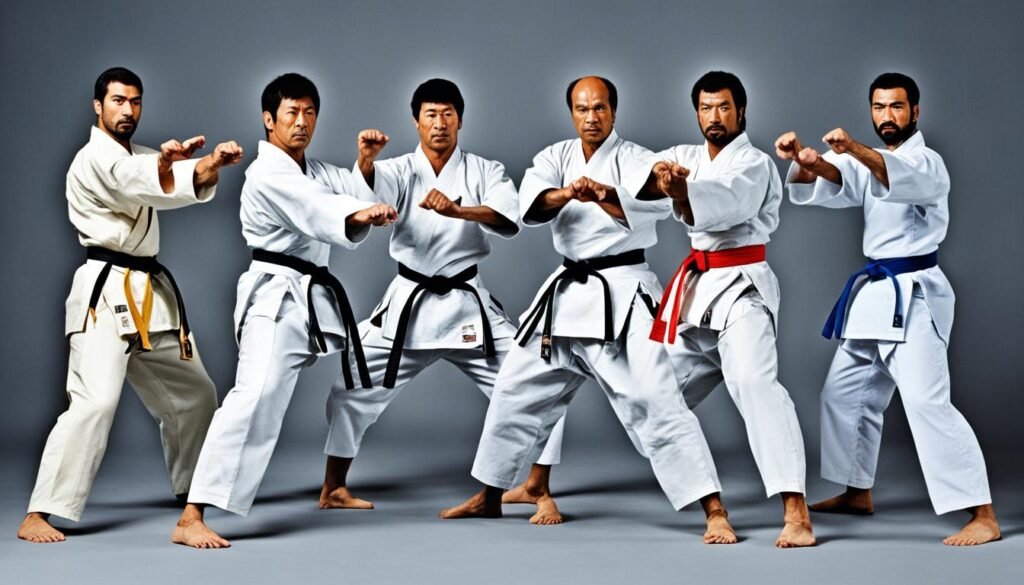Have you ever wondered what the different colors of karate belts symbolize? Or why black belts are considered the highest rank in martial arts? The karate belt ranking system is not only a visual representation of a practitioner’s progress but also holds deep meaning and significance. In this comprehensive guide, we will explore the karate belt order, the history behind it, and the secrets hidden within each color belt. Get ready to unravel the mysteries of the karate belt ranking system and gain a deeper understanding of this time-honored tradition.
Table of Contents
Key Takeaways
- The karate belt ranking system signifies a student’s level of skill and experience in the martial art.
- Black belts are considered the highest rank in karate, symbolizing expertise and mastery.
- Each color belt in karate represents a different stage of progression and holds symbolic meaning.
- The karate belt order consists of nine solid color belts, from white to black.
- Earning a black belt requires dedication, perseverance, and a commitment to lifelong learning.
The History of the Karate Belt System
The tradition of the Karate belt system can be traced back to Jigoro Kano, the founder of Judo. In the 1880s, Kano introduced the colored belt system as a way to identify a student’s level of skill and knowledge. This innovative system quickly gained popularity and was adopted by Gichin Funakoshi, the founder of Shotokan Karate, who incorporated it into Karate practice. That’s why you can see similarities between the judo and karate belt system.
Originally, colored belts were used to differentiate between beginners, intermediate, and advanced students. Each belt color represented a specific level of proficiency and served as a visual indicator of a student’s progress in their martial arts journey. Over time, the Karate belt system became deeply embedded in the culture of martial arts, not just in Karate but also in other disciplines.
Through the colored belt system, instructors and students could easily identify and understand a practitioner’s experience and skill level. This system helps for a structured progression and motivated students to set goals for themselves as they advanced through the belt ranks.
“The colored belt system has been instrumental in providing a clear path for students’ advancement and serves as a source of inspiration and motivation within the martial arts community.” – Sensei Hiroshi Yamamoto
The Karate belt system continues to be an integral part of martial arts training, providing students with a tangible representation of their achievements and a sense of accomplishment as they work towards earning higher-ranking belts.
Evolution of the Karate Belt System
The Karate belt system has evolved to include various interpretations and modifications based on different styles and associations. While the core principles of recognizing skill and progression remain consistent, specific belt colors and the order of progression may vary across different organizations.
It’s essential for practitioners to familiarize themselves with the belt system recognized by their specific style or association to ensure a consistent and harmonious progression through the ranks.
Comparison of Karate Belt Colors in Different Styles
| Style | White Belt | Yellow Belt | Orange Belt | Green Belt | Blue Belt | Purple Belt | Brown Belt | Red Belt | Black Belt |
|---|---|---|---|---|---|---|---|---|---|
| Shotokan Karate | 10th Kyu | 9th Kyu | 8th Kyu | 7th Kyu | 6th Kyu | 5th Kyu | 4th Kyu | 3rd Kyu | 1st Dan |
| Kyokushin Karate | 10th Kyu | 9th Kyu | 8th Kyu | 7th Kyu | 6th Kyu | 5th Kyu | 4th Kyu | 3rd Kyu | 1st Dan |
| Chito-Ryu Karate | 10th Kyu | 9th Kyu | 7th Kyu | 6th Kyu | 5th Kyu | 4th Kyu | 3rd Kyu | 2nd Kyu | 1st Dan |
How Many Karate Belts Are There
There are nine solid color belts, each representing different levels of skill and experience. These belts range from white to black, with each color signifying a specific level of proficiency. The belt order serves as a guide to track a practitioner’s progress and development in Karate.
Each Karate belt color holds a symbolic meaning, representing the progress and growth of a practitioner. Understanding the significance of each belt color can provide insights into the journey of a Karate student.
It is important to note that within the black belt category, there can be multiple degrees, denoted by additional stripes or degrees.
Here is a breakdown of the belt colors in the Karate belt order as well as their meanings:
1. White Belt – Beginner
A new light and the potential for growth

2. Yellow Belt – Junior Rank 1
The yellow light of the sun, indicating openness to learning new techniques
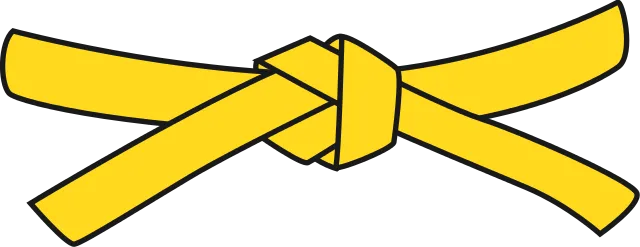
3. Orange Belt – Junior Rank 2
The spreading of light and the student’s increasing potential
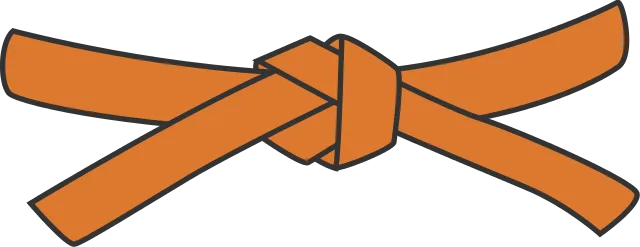
4. Green Belt – Junior Rank 3
Growth and the student’s progress in martial arts

5. Blue Belt – Intermediate Rank 1
The sky, indicating a deeper understanding of Karate techniques

6. Purple Belt – Intermediate Rank 2
The darkening dawn sky, symbolizing intermediate knowledge

7. Brown Belt – Intermediate Rank 3
Maturity and readiness to enjoy the fruits of one’s efforts
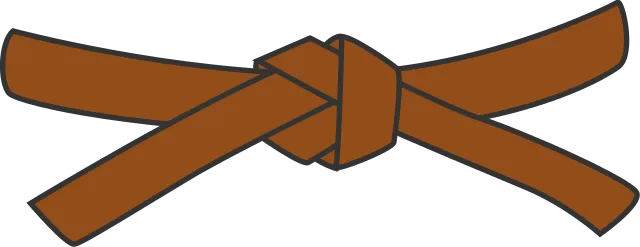
8. Red Belt – Senior Rank 1
The strength of the sun, indicating advanced proficiency in self-defense
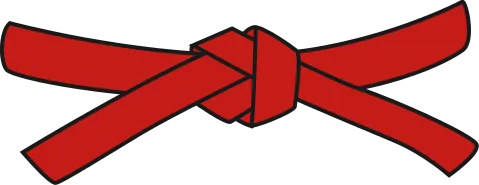
9. Black Belt – Advanced
The highest rank, representing expertise and mastery in Karate

How Long Does It Take To Go Through All The Belts
The time it takes to progress through the Karate belt order can vary depending on factors such as dedication, training frequency, and individual progress. On average, it takes around 5 years or more to go through the entire belt order and earn a black belt. However, this timeframe can differ for each individual. Earning a black belt is not the end of the journey, but rather the beginning of a lifelong commitment to self-improvement.
After completing the colored belt ranks, dedicated Karate students can progress to the dan ranks, which are also known as black belts. These ranks are a reflection of the practitioner’s mastery and expertise in the martial art. Let’s explore the various black belt levels and the highest rank in Karate.
Black Belt Levels and Dan Ranks
“The black belt is not the end; it is the beginning of a lifelong pursuit of knowledge.” – Unknown
In the Karate belt system, there are 10 dan ranks in total, each representing a higher level of mastery. The first-degree black belt is known as Shodan and is considered a beginner’s rank among black belts. As practitioners gain experience and continue to train, they can advance to higher dan ranks. Here’s a breakdown of the black belt levels in Karate:
- Shodan (1st Dan): This is the first-degree black belt and marks the initial step in the realm of black belts. At this level, practitioners demonstrate a solid foundation of Karate techniques and principles.
- Nidan (2nd Dan): The second-degree black belt signifies a deeper understanding and skill level. Practitioners at this rank showcase greater proficiency and expertise.
- Sandan (3rd Dan): As practitioners reach the third-degree black belt, their mastery of Karate techniques and applications becomes more refined. They possess a thorough understanding of the art.
Each subsequent black belt level represents a significant milestone in a practitioner’s journey, symbolizing the continuous growth and dedication to the art of Karate. The highest rank in Karate is the Judan, or tenth-degree black belt.
The Journey of Mastery
Achieving higher dan ranks requires dedication, perseverance, and continuous learning. Karate practitioners must consistently challenge themselves and push the limits of their physical and mental abilities to progress through the black belt levels. The journey of earning and advancing through the black belt ranks is both a personal and collective endeavor, with each practitioner contributing to the legacy and spirit of Karate.
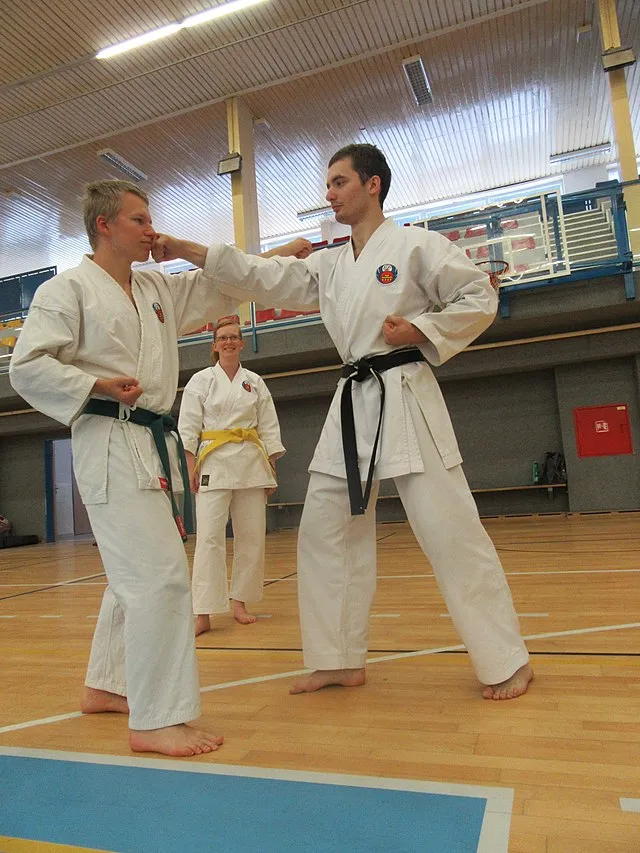
| Black Belt Level | Dan Rank |
|---|---|
| Shodan | 1st Dan |
| Nidan | 2nd Dan |
| Sandan | 3rd Dan |
As practitioners progress through the dan ranks, they have the opportunity to refine their skills, deepen their understanding, and contribute to the Karate community. The black belt levels signify the embodiment of the values, discipline, and techniques that make Karate a respected martial art.
Is There More Than One Karate Belt Order
There exist different Karate belt orders depending on the style or association. While the belt order discussed so far is recognized by the World Karate Federation (WKF), other styles and associations may have their own variations. For example, Shotokan Karate, Kyokushin Karate, and Chito-Ryu Karate each have their own specific belt orders. It’s important for students to understand and follow the belt order specific to their chosen style or association.
Other Karate Belt Orders
Just like in any martial art, different styles and associations in Karate may have their own unique belt systems. These systems may feature different color orders or include additional colors not found in the WKF belt order. Here are some examples of other Karate belt orders:
| Style/Association | Belt Order |
|---|---|
| Shotokan Karate | White, Yellow, Orange, Green, Blue, Purple, Brown, Red, Black |
| Kyokushin Karate | White, Yellow, Red, Blue, Green, Brown, Black |
| Chito-Ryu Karate | White, Yellow, Orange, Green, Brown, Black |
These are just a few examples, and there are many other styles and associations with their own unique belt orders. It’s worth noting that while the colors may vary, the general progression from beginner to advanced remains consistent across Karate disciplines.
It’s crucial for Karate students to familiarize themselves with the belt order specific to their chosen style or association. This ensures that they understand the requirements for each belt rank and can properly track their progress in their respective Karate journey.
By following the appropriate belt order, students can fully immerse themselves in the traditions and practices of their chosen Karate style. It also aligns them with the guidelines and principles established by their style’s governing bodies, enhancing their credibility and recognition within the Karate community.
Whether a practitioner chooses the WKF belt order or a style-specific belt order, the core principles of Karate remain constant. Every belt represents a symbolic step in the journey of self-improvement and personal development through martial arts.
Karate Belt Tests
In order to progress through the Karate belt order, students must pass belt tests. These tests are designed to assess a student’s knowledge, technical skills, and physical abilities. The requirements for each belt test may vary depending on the style or association.
During the karate belt exams, students are typically evaluated on their understanding of techniques, forms (kata), sparring (kumite), and overall progress in their training. The exams provide an opportunity for students to demonstrate their skills and advance to the next rank.
“Karate tests are a crucial part of the student’s journey, allowing them to showcase their development and dedication to the art. It’s during these exams that students can truly prove their proficiency and readiness for belt promotion.”
The specific requirements for belt exams can vary widely, depending on the style or association. For example, some exams may focus more heavily on sparring skills, while others may place greater emphasis on perfecting kata forms. Students are encouraged to consult their instructors or refer to the guidelines provided by their respective martial arts organizations for detailed information on exam expectations.
Throughout the testing process, students are encouraged to train diligently and consistently, honing their techniques and improving their physical fitness. Dedicated practice and proper preparation are key to performing well in belt exams and progressing through the karate belt order.
Remember, belt tests are not just about achieving a higher rank; they are an opportunity for personal growth, improvement, and self-reflection. Embrace the challenge and use each test as a stepping stone on your journey to becoming a skilled martial artist.
| Belt Rank | Exam Requirements |
|---|---|
| White Belt | Basic stances and strikes |
| Yellow Belt | Additional strikes and blocks, basic kata |
| Orange Belt | Advanced strikes and blocks, intermediate kata |
| Green Belt | Complex techniques, advanced kata |
| Blue Belt | Refinement of techniques, application in sparring |
| Purple Belt | Advanced sparring techniques, mastery of kata |
| Brown Belt | Advanced self-defense techniques, proficiency in all aspects of training |
| Red Belt | Expert-level techniques, mastery of all previous requirements |
Required Time Limit Between Karate Belt Examinations
Each belt rank in the Karate belt ranking system may have a minimum time requirement between exams. These time requirements differ depending on the specific style or association. For example, the minimum time between exams for 10th Kyu to 3rd Kyu may be 4 months. The time requirement increases as students progress to higher ranks, with a minimum of 12 months between exams for 1st Kyu to Shodan (black belt). These time limits ensure that students have sufficient time to develop their skills and knowledge before advancing to the next level.
Conclusion
The Karate belt ranking system is an essential and symbolic element in the martial art of Karate. It serves as a visual representation of a student’s progression, skill level, and experiences on their journey. From the humble white belt of a beginner to the prestigious black belt of an advanced practitioner, each belt color holds significance. It not only reflects the dedication, hard work, and expertise of the individual but also serves as a guiding force in their continuous growth and improvement.
However, achieving a black belt is not the end goal in Karate. Within the black belt rank, there are multiple degrees, known as dan ranks, to strive for. Each degree represents a higher level of mastery and specialization, demonstrating the practitioner’s ongoing commitment to the art. These degrees provide further motivation, inspiring Karate students to continue their learning, refining their techniques, and broadening their understanding of the martial art.
The Karate belt order is a structured roadmap that outlines the different stages and levels of proficiency within the discipline. It serves as a source of motivation, encouraging practitioners to set goals and work towards achieving them. As students progress through the belt order, they gain a sense of accomplishment, building self-confidence and resilience along the way. The belt system fosters discipline, dedication, and a growth mindset, forming the foundation for personal development in both physical and mental aspects of the martial art.
In conclusion, the Karate belt ranking system is not merely a measure of skill and experience, but a testament to the practitioner’s passion and commitment. It symbolizes their progress, growth, and continuous learning. With each belt advancement, Karate students embark on a transformative journey, embracing the challenges and rewards that come with each stage. The belt order stands as an integral part of Karate tradition and serves as a reminder for practitioners to strive for excellence, both on the mat and in their personal lives.
FAQ
What is the origin of the Karate belt system?
The Karate belt system originated from Jigoro Kano, the founder of Judo, who introduced the colored belt system in the 1880s.
What is karate belts in order?
The order of karate belts typically progresses from white to black, with various colored belts in between such as yellow, green, blue, and brown. Some schools may include additional intermediate colors or stripes within these ranks.
How do you rank up in karate?
Advancement in karate ranks typically involves testing, where practitioners demonstrate their proficiency in various techniques such as kicks, hand strikes, blocks, and kata (choreographed patterns of movements). Each rank may also require a specific duration of training in the dojo before being eligible to test for the next level.
Is there a belt higher than black in karate?
In traditional karate systems, the black belt is generally considered the highest attainable rank in the colored belt system. However, in some martial arts, there are belts above black, such as the red and white belt in Judo. These higher belts often signify exceptional mastery and expertise in the art.
Is red belt better than black?
The significance of a red belt versus a black belt in karate can vary depending on the martial arts system and cultural context. Generally, the black belt symbolizes a high level of proficiency and mastery in the art, while the red belt may indicate further distinction or recognition within the black belt ranks. However, the exact meaning of these belts can differ between different martial arts organizations and schools.
How long does it take to progress through the Karate belt order and earn a black belt?
On average, it takes around 5 years or more to go through the entire Karate belt order and earn a black belt, but this timeframe can vary for each individual.
Is earning a black belt the end of the Karate journey?
No, earning a black belt is not the end, but rather the beginning of a lifelong commitment to self-improvement and further mastery in Karate.
What are the different levels of black belts in Karate?
There are 10 dan ranks in total for black belts, with each rank indicating a higher level of mastery and expertise.


